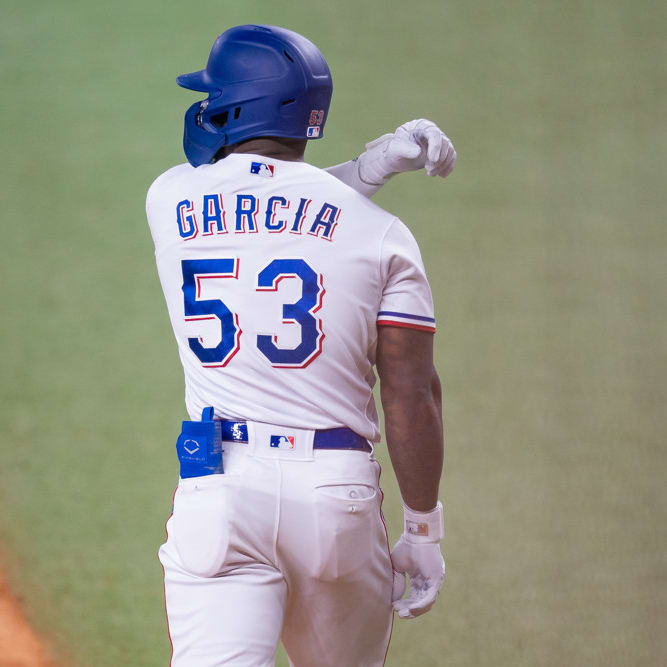This article is part of our Stathead Sagas series.
Jeff Sullivan wrote a piece at FanGraphs this week about the Athletics' acquisition of Stephen Drew. Sullivan referred to Drew as the Athletics' "random number generator" down the stretch.
Drew entered his Oakland career batting just .193 on the 2012 season, a return from a vicious ankle injury that cost him much of the second half of 2011 as well. The Athletics' wisdom in regards to this move will likely be judged solely on how Stephen Drew hits over the course of his next 100 or 150 at-bats. And here is where Sullivan's description comes in: these 150 at-bats might as well be predicted by a random number generated.
So here's the question: at what point is a pickup to boost your batting average down the stretch any better of a bet than just firing up the random number generator and praying?
If you're just picking up one player, the answer is rarely. By this point – approximately 75% of the way through the season – the 150 at-bats remaining will comprise about 2.5% of your team's overall at-bats. If your team has a .260 average, it would take a .300 mark out of this player just to increase your squad's average by one point (assuming the rest of the team continues to hit .260 the rest of the way) and a crazy .460 mark to raise it by five points.
But can you actually expect any hitter to put up that .460 mark, even over just a quarter
Jeff Sullivan wrote a piece at FanGraphs this week about the Athletics' acquisition of Stephen Drew. Sullivan referred to Drew as the Athletics' "random number generator" down the stretch.
Drew entered his Oakland career batting just .193 on the 2012 season, a return from a vicious ankle injury that cost him much of the second half of 2011 as well. The Athletics' wisdom in regards to this move will likely be judged solely on how Stephen Drew hits over the course of his next 100 or 150 at-bats. And here is where Sullivan's description comes in: these 150 at-bats might as well be predicted by a random number generated.
So here's the question: at what point is a pickup to boost your batting average down the stretch any better of a bet than just firing up the random number generator and praying?
If you're just picking up one player, the answer is rarely. By this point – approximately 75% of the way through the season – the 150 at-bats remaining will comprise about 2.5% of your team's overall at-bats. If your team has a .260 average, it would take a .300 mark out of this player just to increase your squad's average by one point (assuming the rest of the team continues to hit .260 the rest of the way) and a crazy .460 mark to raise it by five points.
But can you actually expect any hitter to put up that .460 mark, even over just a quarter of a season? And if not, what's the most we can realistically expect out of anybody? Turning to mathematics, we get a formula for the standard deviation in batting average given a true-talent batting average as follows:
sd = sqrt((AVG(1-AVG))/AB)
This formula works for any sort of binary variable like batting average or on-base percentage where the only results are a 1 (in this case, getting a hit) or a 0 (getting out). It won't work for something like ERA or WHIP, however – the above formula doesn't take well to things that can handle two hits in an inning or three runs in a game.
Since the true-talent batting average for all major league-caliber players probably fits in the .200-.350 range, we get a standard deviation of somewhere between 33 and 39 points. As the following chart shows, there's a wide range of possibilities for any hitter:
There's a 65 percent chance a hitter with a certain true talent batting average will fall between the "Low End" and "High End" marks for a 150 at-bat sample and a 95 percent chance he'll fall between the "Super Low End" and "Super High End" marks. As you can see, not even the .350 true-talent hitter pushes beyond even a five percent chance at an average over .450 for this long.
There are certainly some cases in which one batting average point can come out to mean a pivotal roto point or two, but those are the situations in which the decision-making is easy. If you need to pick up that more substantial five-point gap you'll have to swap out two players to have any realistic chance to reach the goal. It takes a pair of hitters putting up a .360 composite average to bring a .260 mark up to .265 by the end of the season. Getting a pair of hitters to manage the requisite .360 isn't easy, but it's at least possible.
Lest you were feeling confident though, it's not that possible. Observe:
"So you're sayin' there's a chance!"
The chart shows odds for attaining a .360 average between two hitters over 300 at-bats (split evenly) given the true talent average of the two players. The chart runs out to .350; good luck finding two players with a .350 composite true-talent average anywhere, much less on the waiver wire in August. But it illustrates the point. The odds of getting your five-point bonus don't even touch one percent until .300. The exponential nature of these odds makes every point over about a .325 average very important, but we still end up with just a 33.4% chance of eeking out our .360 average at a .350 true talent.
If all of this seems a bit fatalistic, well, that's because it is. Nobody really expects to be able to make too big of a charge in a roto league in August or September; in head-to-head leagues we're already nearing playoff time. But even the best laid plans tend not to really mean anything when it comes to roto pickups at this point in the season. There is simply too much needed in too small of a sample. If you find yourself facing a huge deficit at this point, just turn to the random number generators and start praying. It's as good as anything else you can do.










